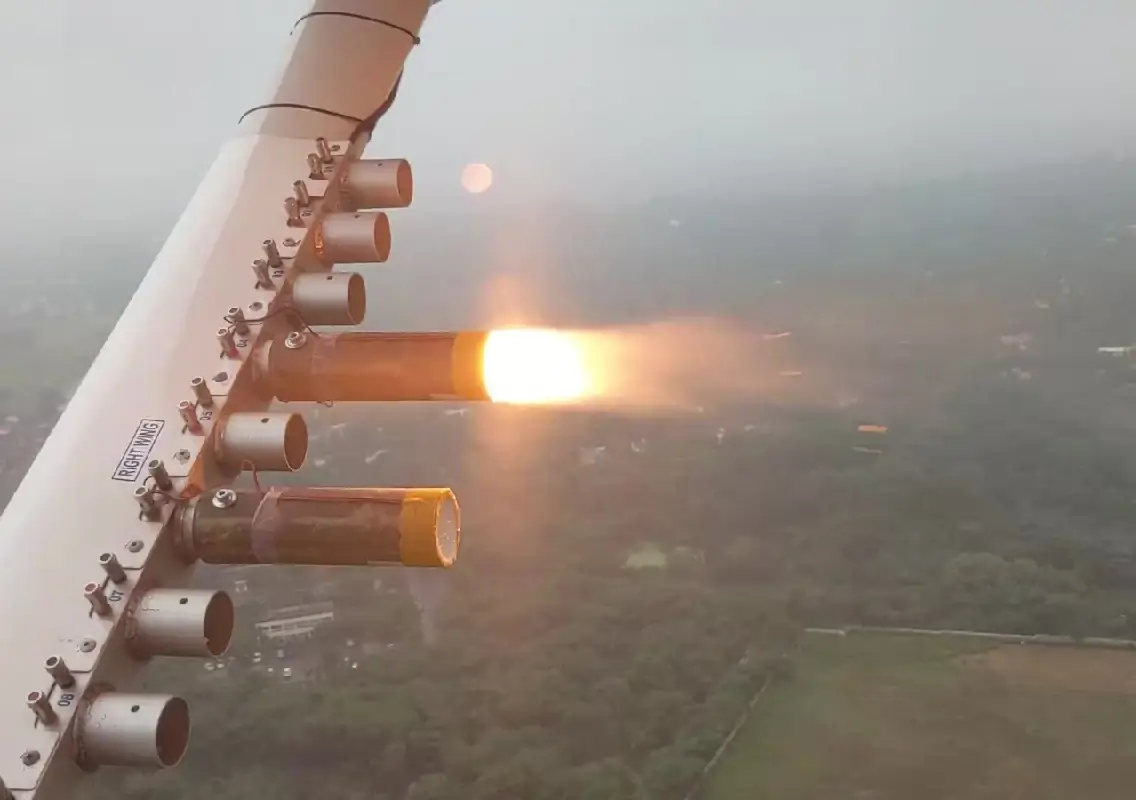Copyright newskarnataka

Delhi came a step closer to witnessing its first-ever artificial rainfall on Friday after scientists from the Indian Institute of Technology (IIT) Kanpur successfully conducted a two-phase cloud seeding operation over the city’s northern skies — a landmark effort aimed at combating post-Diwali pollution. The mission, executed over a 25-nautical-mile corridor between Khekra and Burari, is part of a first-of-its-kind initiative to improve air quality in the national capital, where air pollution levels have once again soared to hazardous levels. “With both seedings successfully completed, we now have to wait till late evening to see if it rains,” said Professor Manindra Agrawal, Director of IIT Kanpur and lead scientist on the project. How the operation unfolded The day began with a trial flight from IIT Kanpur’s airstrip, coordinated with the Chakeri Air Traffic Control (ATC) to assess flying conditions and atmospheric stability. According to Professor Soumya Ranjan Sahoo, media coordinator for the mission, the aircraft flew at altitudes between 3,000 and 6,000 feet over Kanpur, Gwalior, Meerut, and Hindon sectors to evaluate cloud base and visibility before clearance was granted for the main Delhi operation. “Visibility above 5,000 feet was poor, while conditions around 3,000 feet were ideal. The final flight plan was adjusted accordingly,” Sahoo said. Shortly after noon, the first aircraft departed for Delhi airspace, targeting moisture-bearing clouds between Khekra (Uttar Pradesh) and Burari (Delhi).During this round, six silver-iodide flares were fired at about 4,000 feet, each burning for nearly 18.5 minutes to disperse condensation particles that could trigger rain. A second flight took off at 3:55 pm, deploying eight additional flares between 5,000 and 6,000 feet, covering the upper cloud layers over north Delhi and parts of western Uttar Pradesh. Monitoring and expected impact The IIT Kanpur team is tracking atmospheric data in real time through the India Meteorological Department (IMD) and Windy professional systems. “The moisture levels looked favourable earlier in the day, but we will know by tonight whether the seeded clouds have yielded precipitation,” Professor Agrawal said. The operation’s goal is to reduce Delhi’s Air Quality Index (AQI), which stood at 293 on Friday morning — an improvement from the ‘severe’ 400+ range earlier this week, but still far from safe. “If all goes well, the rainfall could bring the AQI below 100,” Agrawal told News18. “That would mean transitioning from hazardous to breathable air in a matter of hours.” The experiment has been cleared by the Directorate General of Civil Aviation (DGCA) for up to five trials between October 1 and November 30, depending on suitable cloud conditions. Joint scientific effort The artificial rain project is a joint effort between IIT Kanpur, the India Meteorological Department (IMD), and the Indian Institute of Science (IISc), under the Delhi government’s supervision. Officials said that if successful, it could serve as a template for other polluted Indian cities, including Kanpur, Lucknow, Patna, and Ghaziabad. “Rain is nature’s best air purifier. We’re simply trying to accelerate that process through controlled, scientific means,” Agrawal explained. The science of cloud seeding Cloud seeding involves dispersing microscopic particles — typically silver iodide or sodium chloride — into clouds to encourage water droplets to form and fall as rain.The technology, developed in the 1940s, has been used globally in China, the UAE, and the US, primarily for drought relief or increasing agricultural rainfall. Delhi’s project, however, is unique, focusing on air quality management rather than rainfall generation for irrigation. Waiting for the results As the day turned to evening, anticipation mounted across monitoring stations in Delhi and Kanpur. The success of the operation now depends on moisture availability, wind velocity, and temperature gradients, which determine whether the seeded particles can produce rain. “We’ve done everything within our control — scientifically, logistically, and technically,” said Professor Agrawal. “Now it’s up to the clouds.” If successful, the experiment could usher in a new chapter in India’s environmental management, offering a powerful tool against Delhi’s recurring winter smog.



